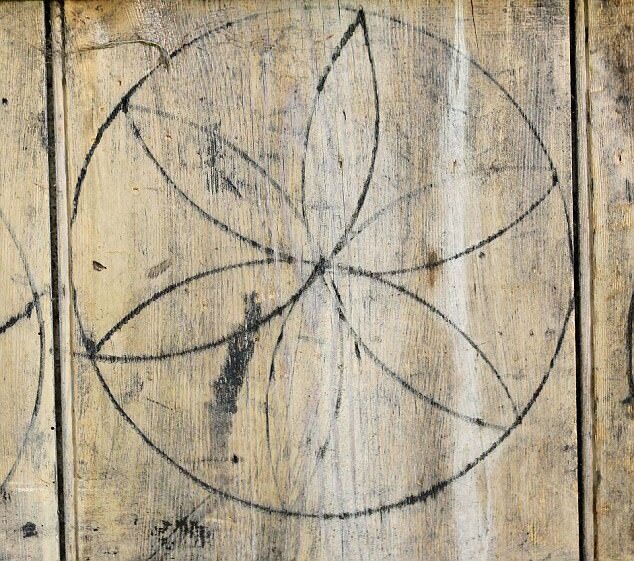
18th century barn in Suffolk, England photo credit: Michael Cole for the Daily Mail
A bit of history...
The 6 petalled rosette also known as the Seed of Life, The Genesis Pattern, Hexafoil, Daisy Wheel in Christianity, gwiazda(Polish for Star), & The Witch's Mark used for protection, has been found all around the world dating back to Antiquity.
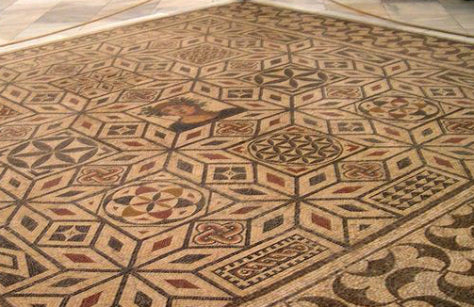
Possibly a Roman period mosaic floor in the Archaeological Museum of Seville, Spain. Undated. (Photo © Rafael del Pino)
This pattern has been found all around the world in many forms of art and design.
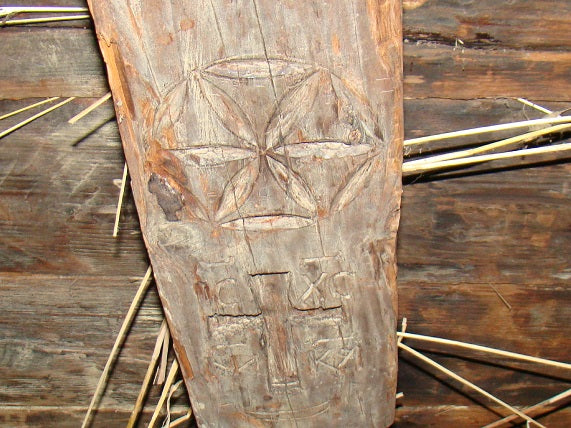
A rosette on a crossbeam can be found in a Lemko cottage in the Rural Architecture Museum of Sanok (Poland). dating back to 1681
Found in many homes and architecture
The Rosette was used in many cultures as a form of protection carved into the wood beams in structures and homes.
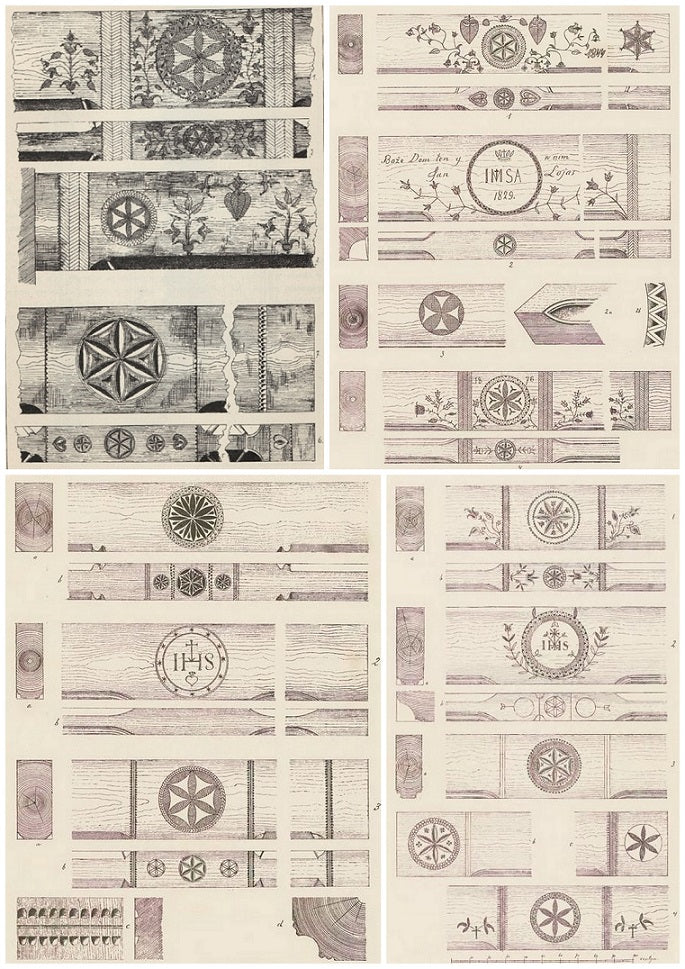
Pages from two of Władysław Matlakowski’s books about folk architecture in Podhale with drawings of crossbeams with the rosette
Podhale Region,Poland
Site Credit/More Information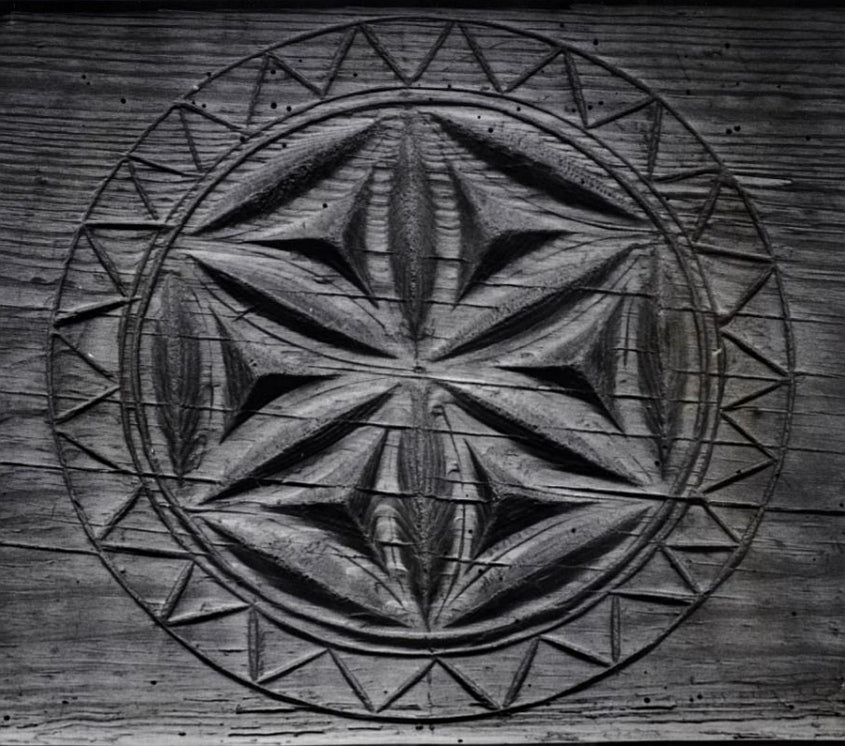
Rosette from a ceiling beam, village of Korytków Duży, Biłgoraj County. Photography by J. Urbanowicz, 1968
The architecture is breathtaking and typically flawless
Website Credit/More Info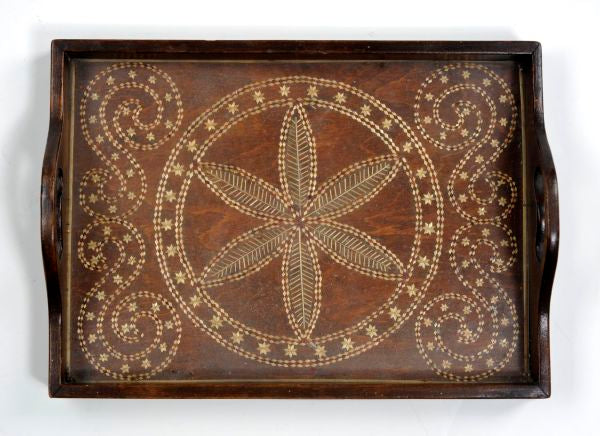
Decorative wooden tray from 1920, district Puławy, Lubelskie voivodeship, eastern Poland. Source:
The Rosette is also found in many designs such as pottery and other household items.
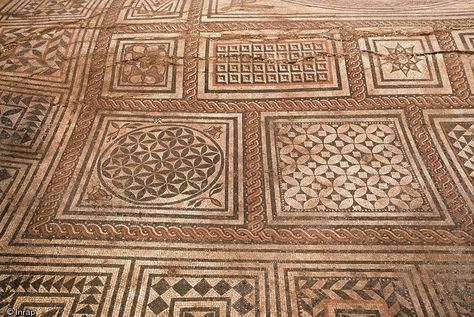
Picture 6.2.4: Floor mosaic © Pierre Dupont, Inrap
Geometrical motifs in the mosaics visible in the Museum of Fine Arts and Archaeology. Besancon, France, Gallo-Roman Period 123 BC – 486 AD.
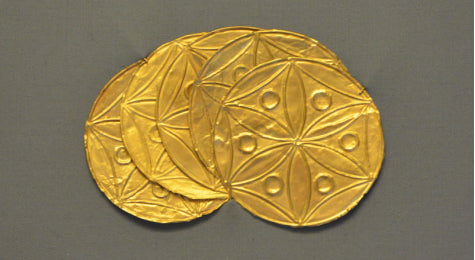
Picture 6.1.1: Gold six-petal rosette foils © Marko Manninen
Mycenaean funerary gold foil attachments with six-petal rosette geometry found from the Archeological Museum of Istanbul. Mycenae, Greece, 1600 BC.
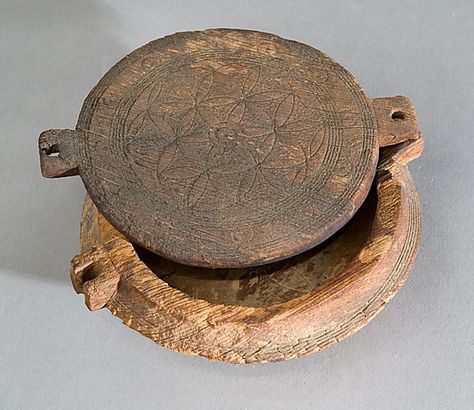
Picture 6.1.2: Wooden cosmetic box © MET
A circular wooden cosmetic box with a swivel lid1 in the The Metropolitan Museum of Art in New York. Thebes, Egypt, 1492 - 1473 BC.
This box has a swivel top incised with a decorative pattern of concentric and overlapping circles that must have been made with an early version of a drawing compass.
Resembling 12 petal rosette in the ivory box2 1550 BC and 32 rays straight line star can be found from the same period.
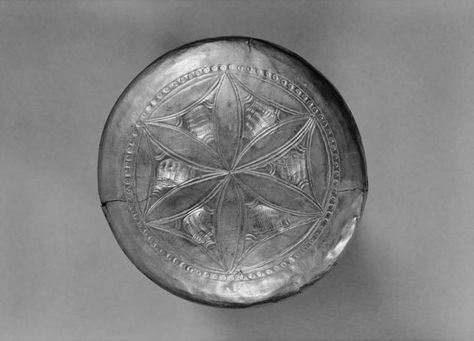
Picture 6.1.4: Golden goblet © 1985 Photo RMN / Pierre et Maurice Chuzeville
The underside of a golden goblet6in the museum of Louvre. Excavation report7shows several artifacts having similar six-petal rosettes with surrounding petals (or larger rosette nets) under the goblets and beakers. Marlik, Iran, 1400 – 1100 BC. (Photo © 1985 Photo RMN / Pierre et Maurice Chuzeville)
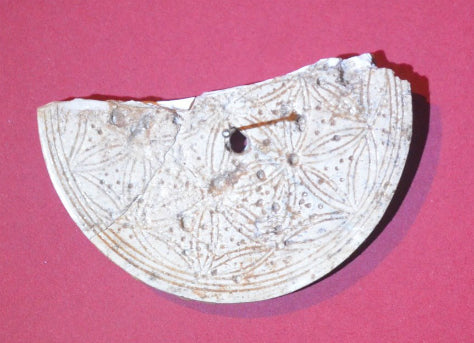
Picture 6.1.5: Ivory whorl © Marko Manninen
This artifact was categorized as a local object from the sanctuary of Aphrodite. It is visible in the Museum of Palaipafos (Kouklia, Cyprus). Dating is mentioned between 1600 - 1100 BC making it one of the oldest FOL found from the Mediterranean world.
Similar ivory whorls8 can be seen in the British Museum. They are also from Cyprus, 1340 - 1050 BC. Note how peripheral petals are rough and made probably by hand. This is a good example how much precise work it takes to draw the whole FOL pattern after the first seven simple circles. (Photo © Marko Manninen)
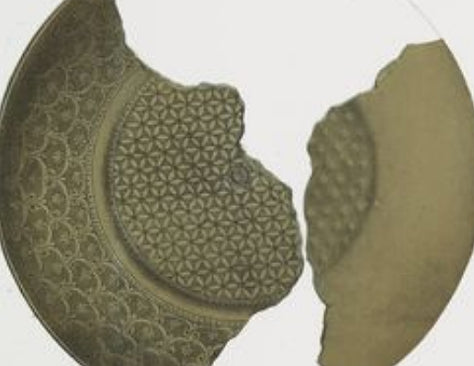
Picture 6.1.7: Bronze vessel © NYPL Digital Library
A bronze vessel16 from the palace of Sennacherib. New York public library. Iraq, Nimrud, 700 BC. (Photo © NYPL Digital Library)
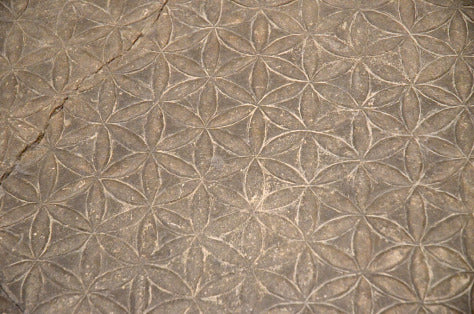
Picture 6.1.8: Stone floor sill © Marko Manninen
A stone floor sill with a field of interlocking circles decoration from the palace of King Ashurbanipal. Visible in the Museum of Louvre. Related objects are also visible in the British Museum (BM 11891017, BM 11891318). The Northern Iraq, 645 BC. (Photo © Marko Manninen)
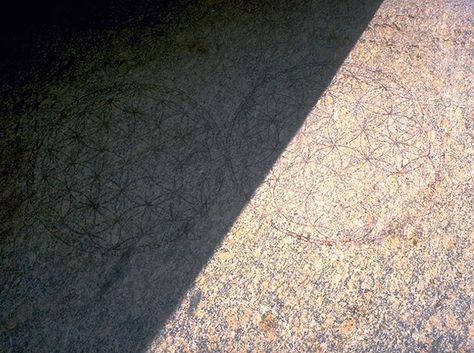
Temple of Osiris Abydos Egypt
The famous ornament found at the stone slab in the Temple of Osiris. Claimed to have origins in 3000 BC (or even much older), but critical analysis gives dates from 400 - 200 BC to even after 1900 AD. Abydos, Egypt. (Photo © Ray Flowers)
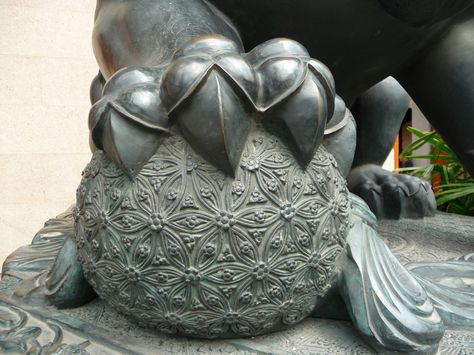
Picture 6.3.6: Fu Dog sphere © Tyson Amick
Found at Sacred Sites all around the world.
An earth sphere under the Fu Dog (or male lion/Buddha). This is a common defender statue on the houses and temples in the Ming and Qing dynasties. The picture is of one of the stone lions guarding the Jing'An Temple in Shanghai, China. Undated. (Photo © Tyson Amick3)
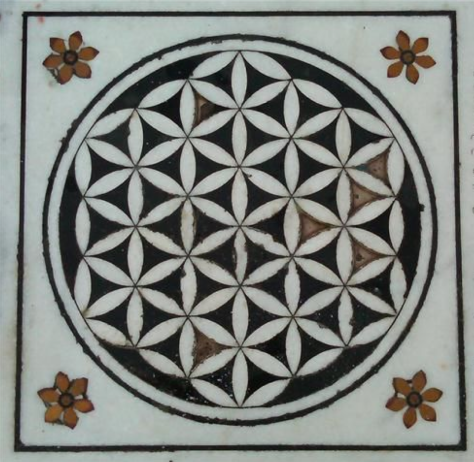
Picture 6.3.7: Sikh temple marble decoration
Marble floor decoration in the Harmandir Sahib Sikh temple5. Amritsar, India. Undated. Unable to trace original photographer.
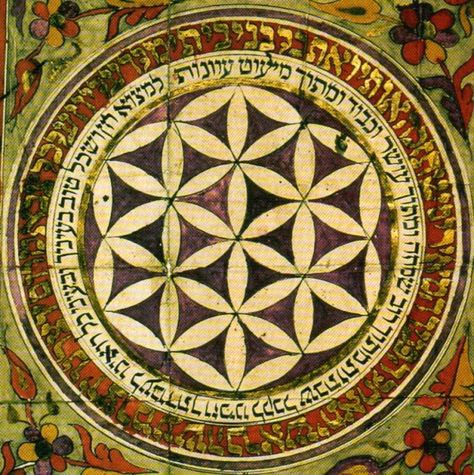
Picture 6.3.8: Jewish painting
A Jewish painting that has a Hebrew inscription around the circle of the Flower of Life. Unplaced, Undated. Unable to trace original photographer.
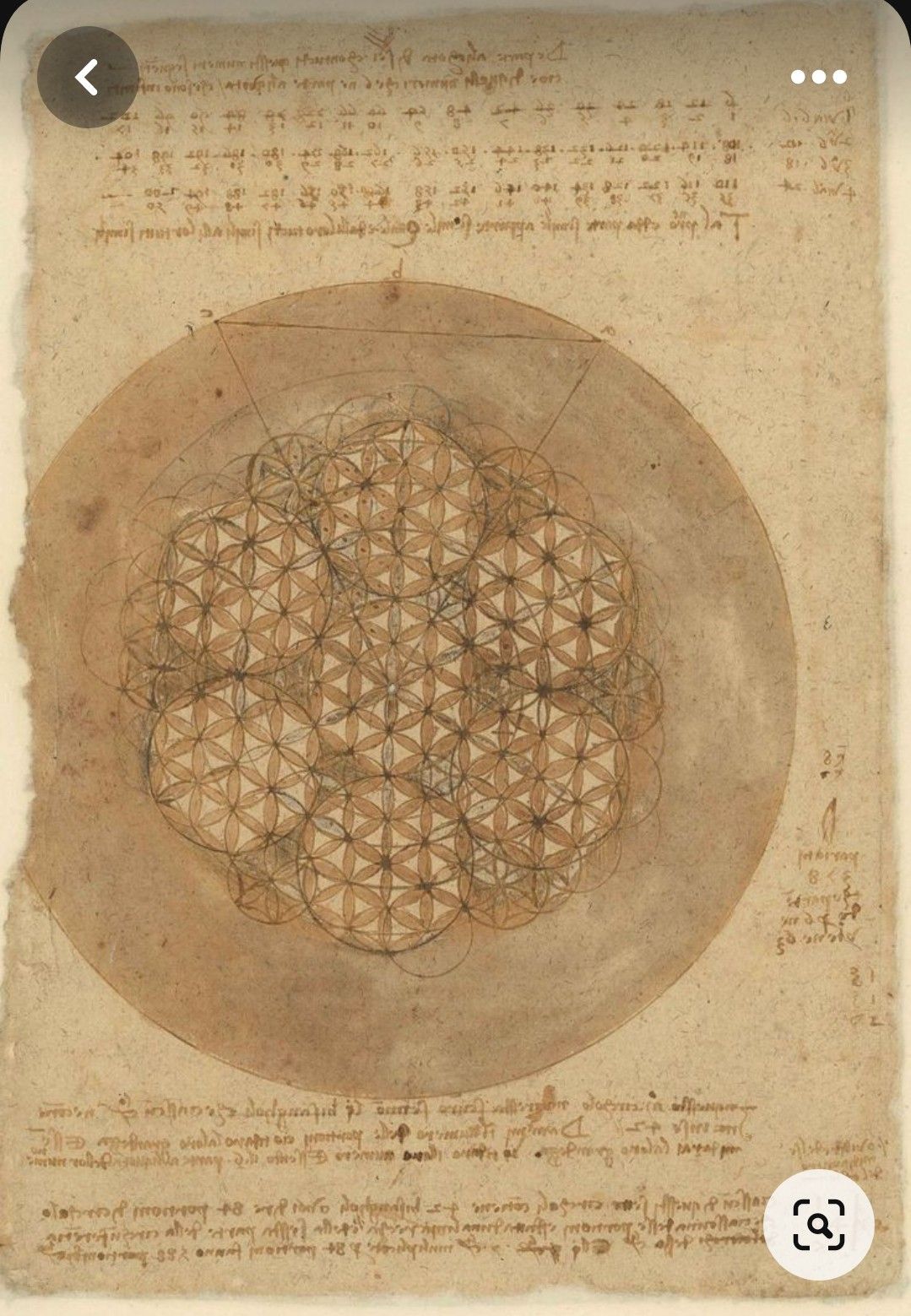
A page from Leonardo Davinci's work
Leonardo da Vinci is known to have used sacred geometry in his work. He was fascinated by the principles of mathematics, symmetry, and the natural world, which are key elements of sacred geometry. This can be seen in several aspects of his art and studies:
1. **The Vitruvian Man**: One of Da Vinci's most famous works, *Vitruvian Man*, is based on the principles of sacred geometry. The drawing illustrates the ideal human proportions, aligning the human body with the geometry of a circle and square, reflecting the harmony between the human form and the universe.
2. **The Golden Ratio**: Da Vinci was aware of the golden ratio (approximately 1.618), a number that is often found in sacred geometry. It represents a proportion that occurs frequently in nature and is considered aesthetically pleasing. Da Vinci applied the golden ratio to his art, especially in works like the *Mona Lisa* and *The Last Supper*, where proportions and composition are aligned with this ratio to create balance and harmony.
3. **Mathematical and Geometric Studies**: In his notebooks, Da Vinci sketched many geometric shapes, including perfect circles, triangles, and hexagons, exploring how these patterns related to the physical world. These studies reflect his interest in the idea that geometry could be a bridge between art, science, and the divine.
In summary, Da Vinci used sacred geometry to explore the relationships between the human form, nature, and the cosmos, elevating his works both artistically and symbolically.
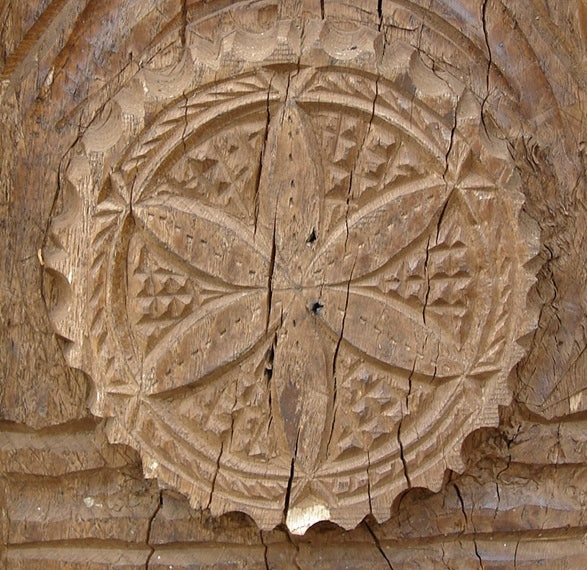
Source Unknown
